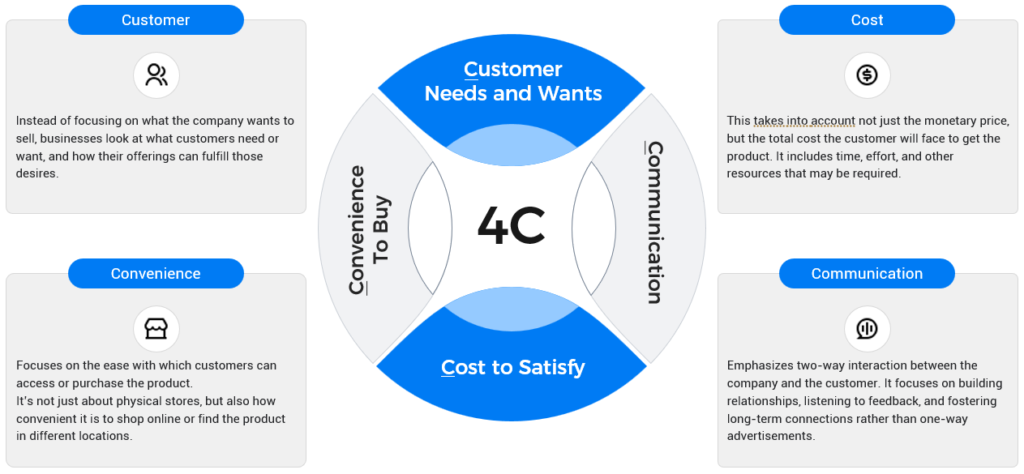The 4C marketing model was introduced by Robert F. Lauterborn in 1990 as an alternative to the traditional 4P Marketing Mix model (introduced by E. Jerome McCarthy in 1960).
With the rapid changes in the marketplace and shopping environment (will be mentioned below), Lauterborn recognized that the traditional 4P Marketing Mix was no longer sufficient, focusing on the customer’s needs and wants was more important than simply pushing a product, therefore he came up with the 4C model.
From a high-level, the 4C model is a customer-centric approach that places more emphasis on delivering value from the customer’s perspective, reflecting the evolving relationship between companies and consumers in a more interconnected world.
Why Move to 4C?
The 4C model has gained popularity due to changes in the marketplace:
- The Rise of E-Commerce: Online shopping gives customers more control, making “convenience to buy” crucial.
- Consumer Empowerment: Social media allows customers to voice opinions, pushing brands to engage in two-way communication.
- Personalization Expectations: Customers expect tailored experiences, aligning with the focus on customer needs and wants.
- Value Beyond Price: Consumers now consider the full effort involved in purchasing, captured by cost to satisfy.
While the 4P Marketing Mix is product-focused, the 4C model shifts the focus to customer satisfaction. Businesses that combine both can ensure they’re creating the right products, at the right price, in the right place, with the right promotion while staying aligned with customer needs.
Core Concept of 4C
The 4C model consists of four key components:
Customer
Customer Needs and Wants replaces Product.
Instead of focusing on what the company wants to sell, businesses look at what customers need or want, and how their offerings can fulfill those desires.
Cost
Cost to Satisfy replaces Price
This takes into account not just the monetary price, but the total cost the customer will face to get the product. It includes time, effort, and other resources that may be required.
Convenience
Convenience to Buy replaces Place.
This focuses on the ease with which customers can access or purchase the product.
It’s not just about physical stores, but also how convenient it is to shop online or find the product in different locations.
Communication
Replaces Promotion.
Instead of just promoting a product, communication emphasizes two-way interaction between the company and the customer.
It focuses on building relationships, listening to feedback, and fostering long-term connections rather than one-way advertisements.
Unlock all frameworks and templates
Unlock exclusive thinking frameworks and practice templates.
Become a member to access all premium content to elevate your thinking!
Template
Get into the real practice now.

Available in the Templates
Go to Templates to download the resource.

